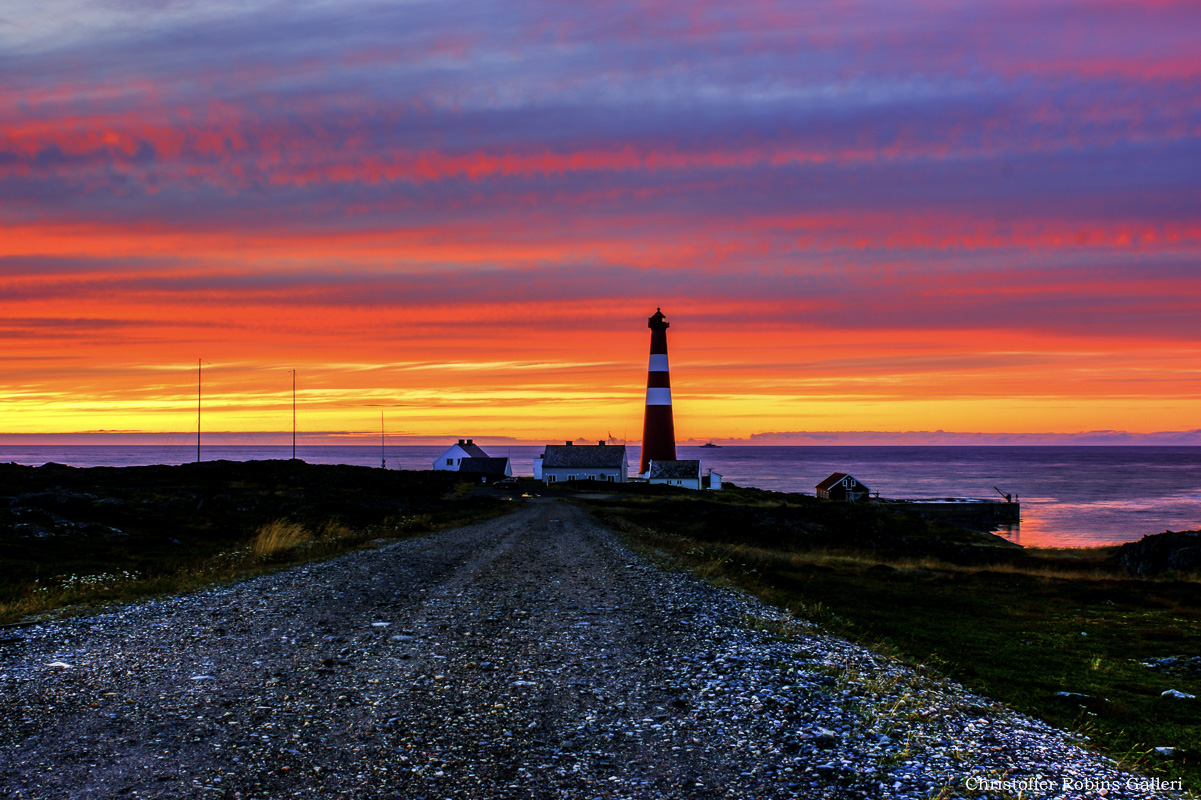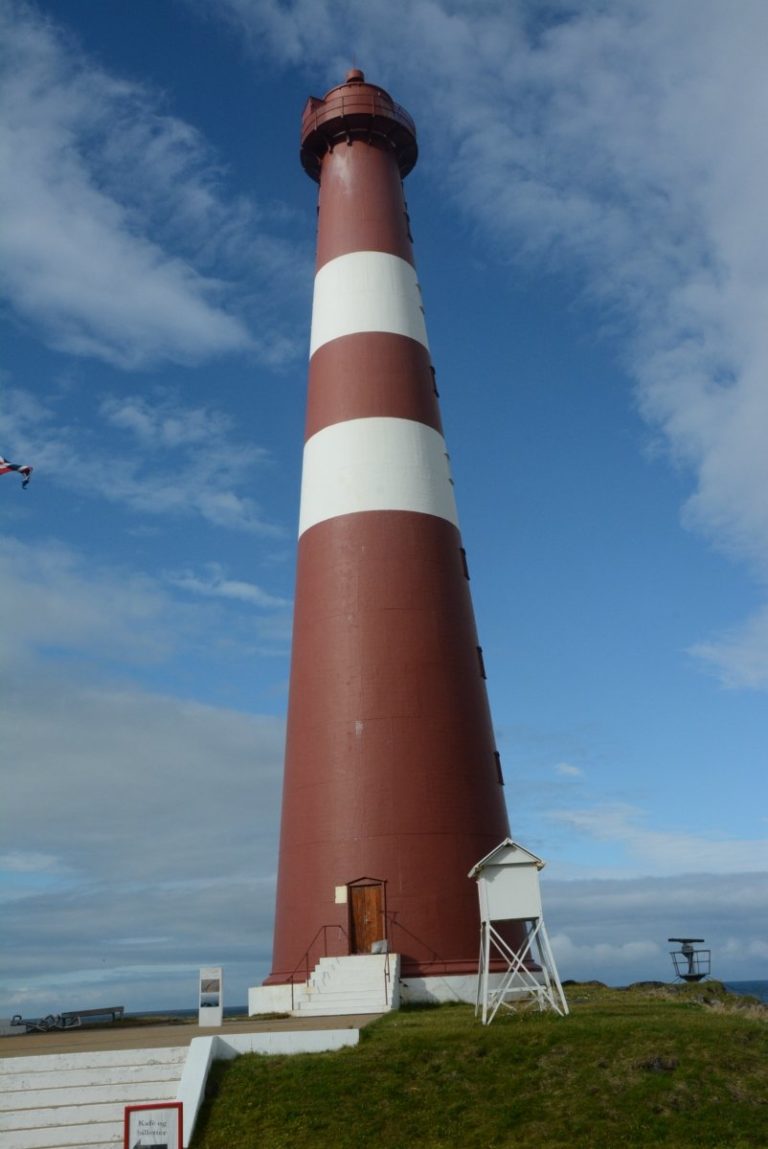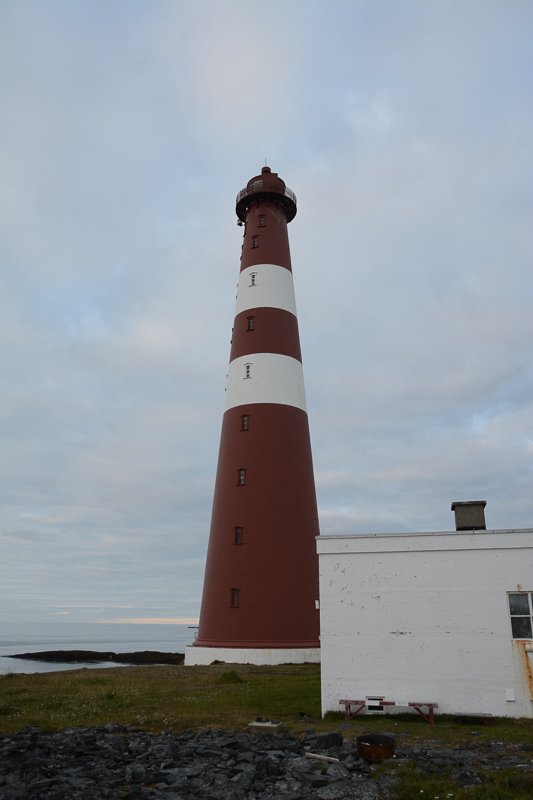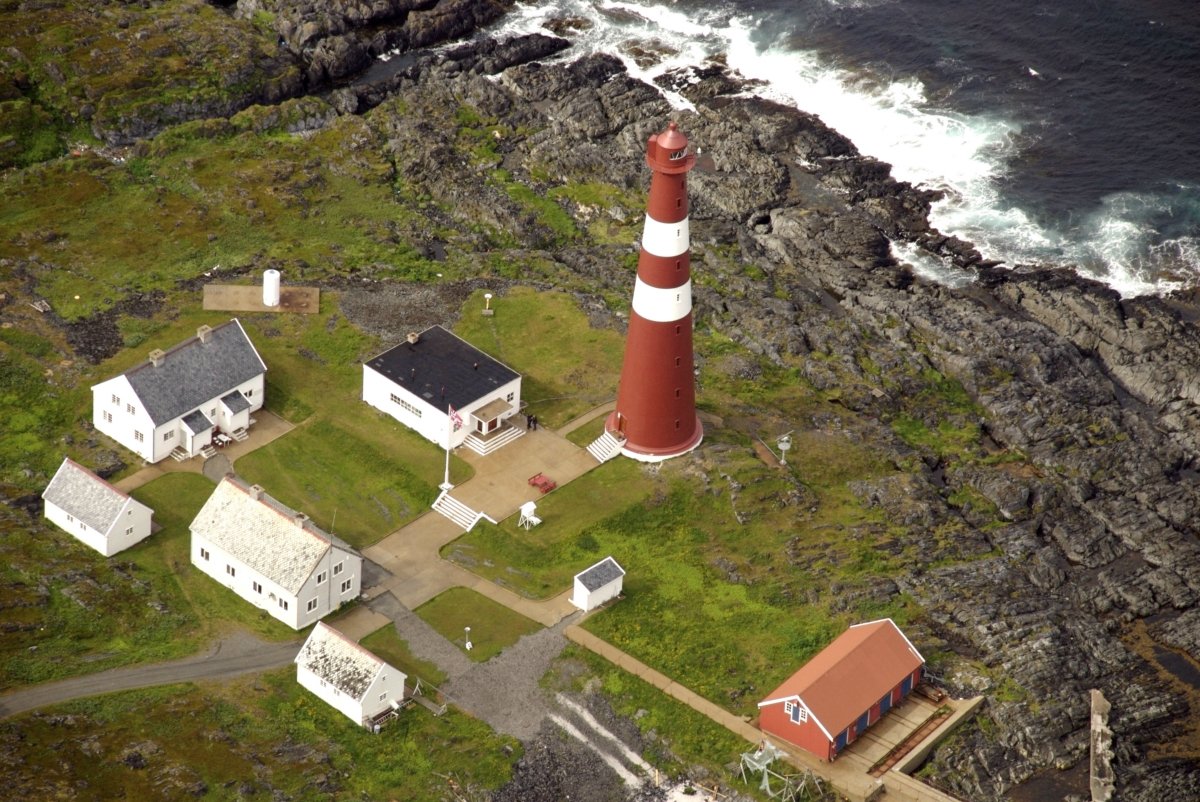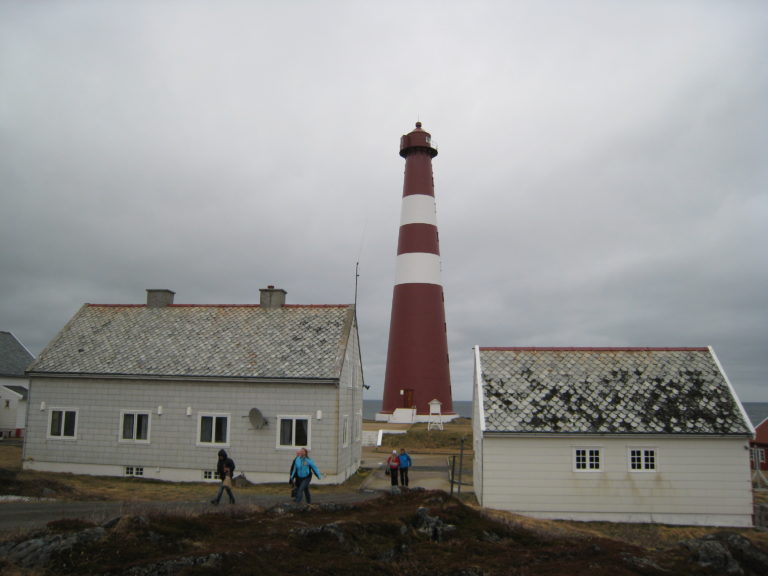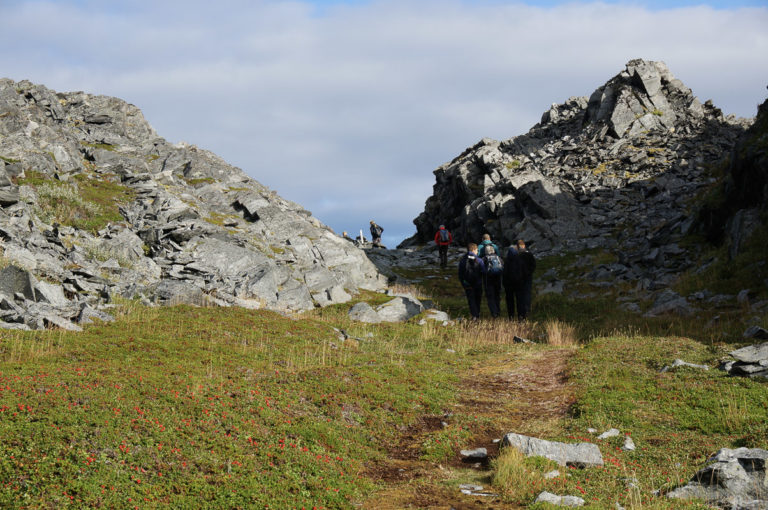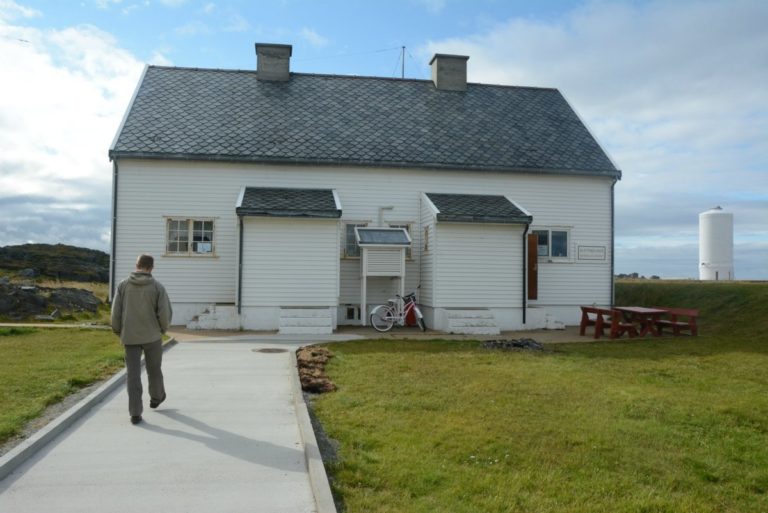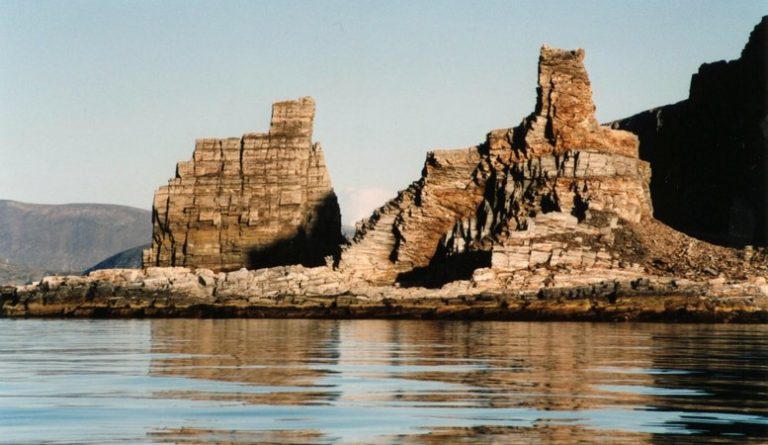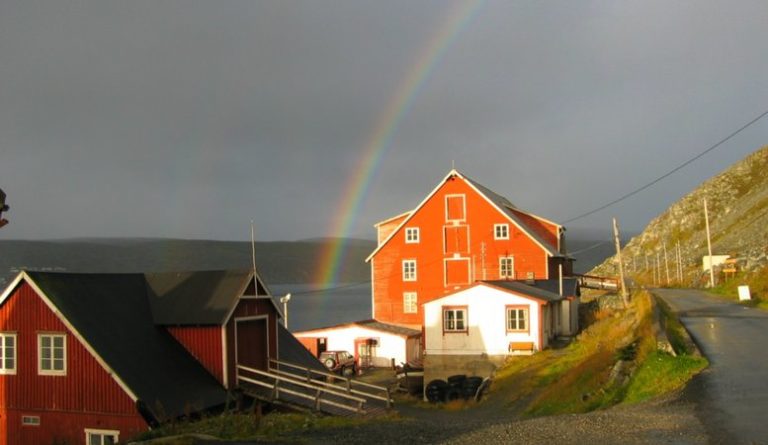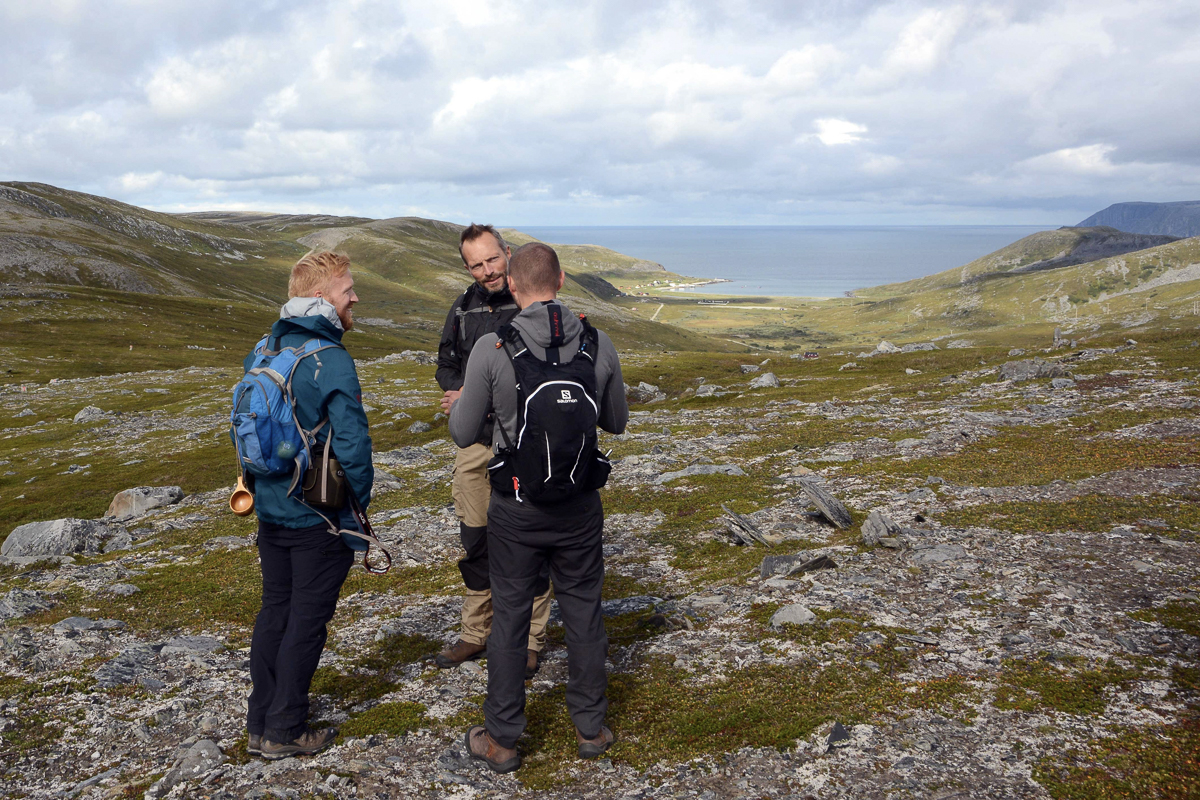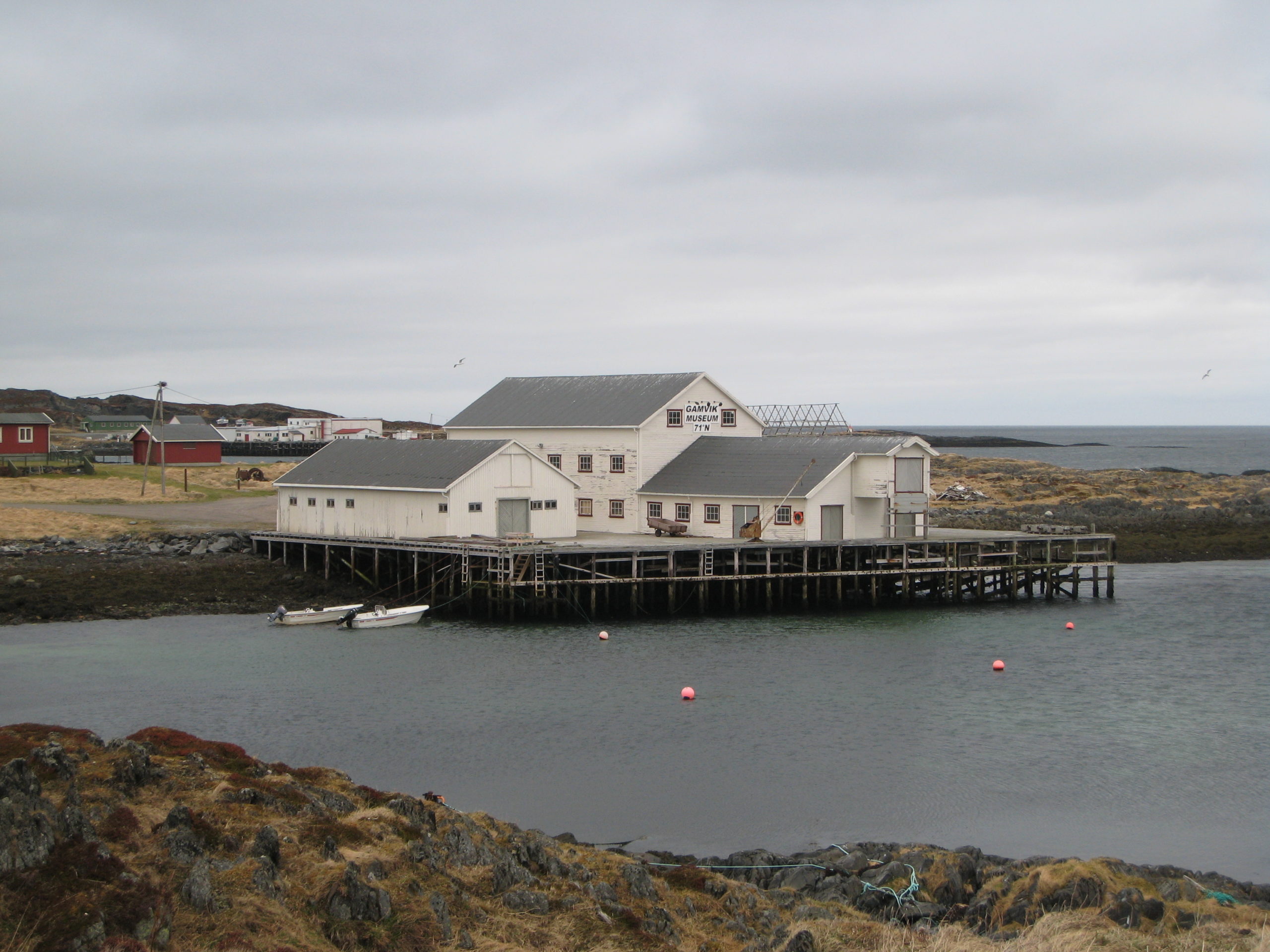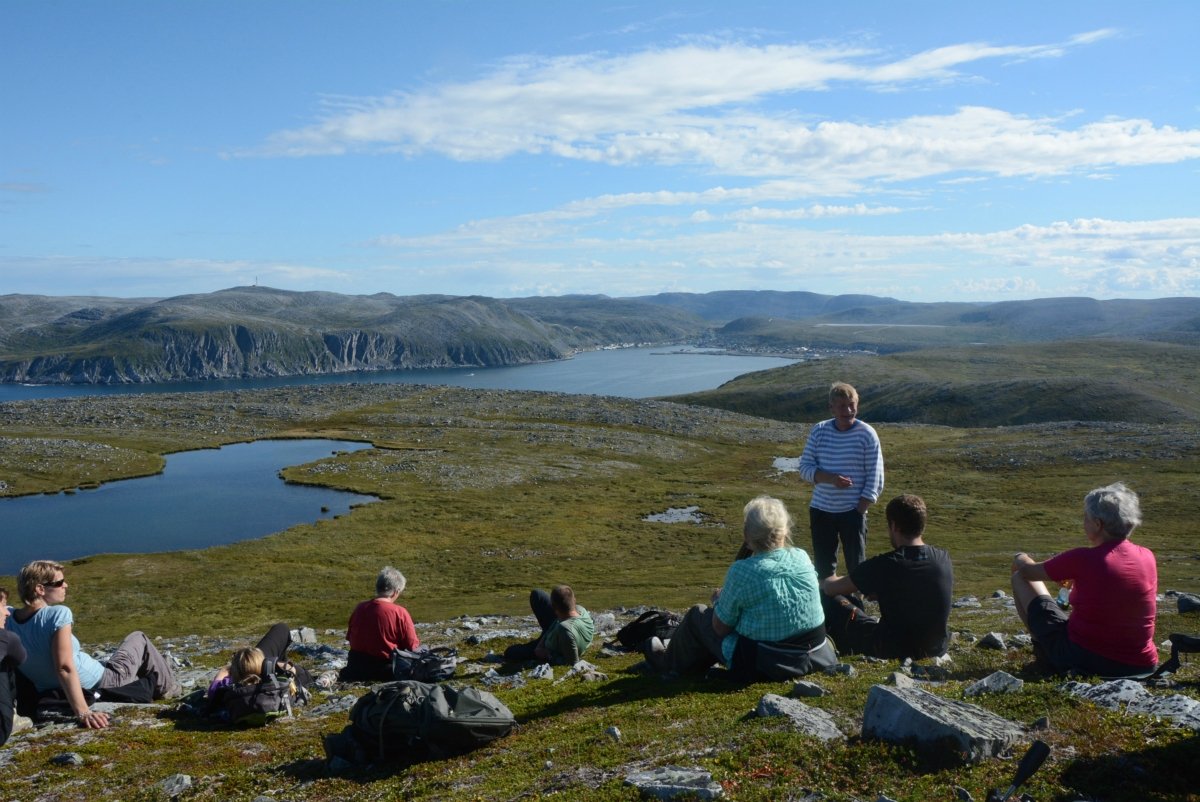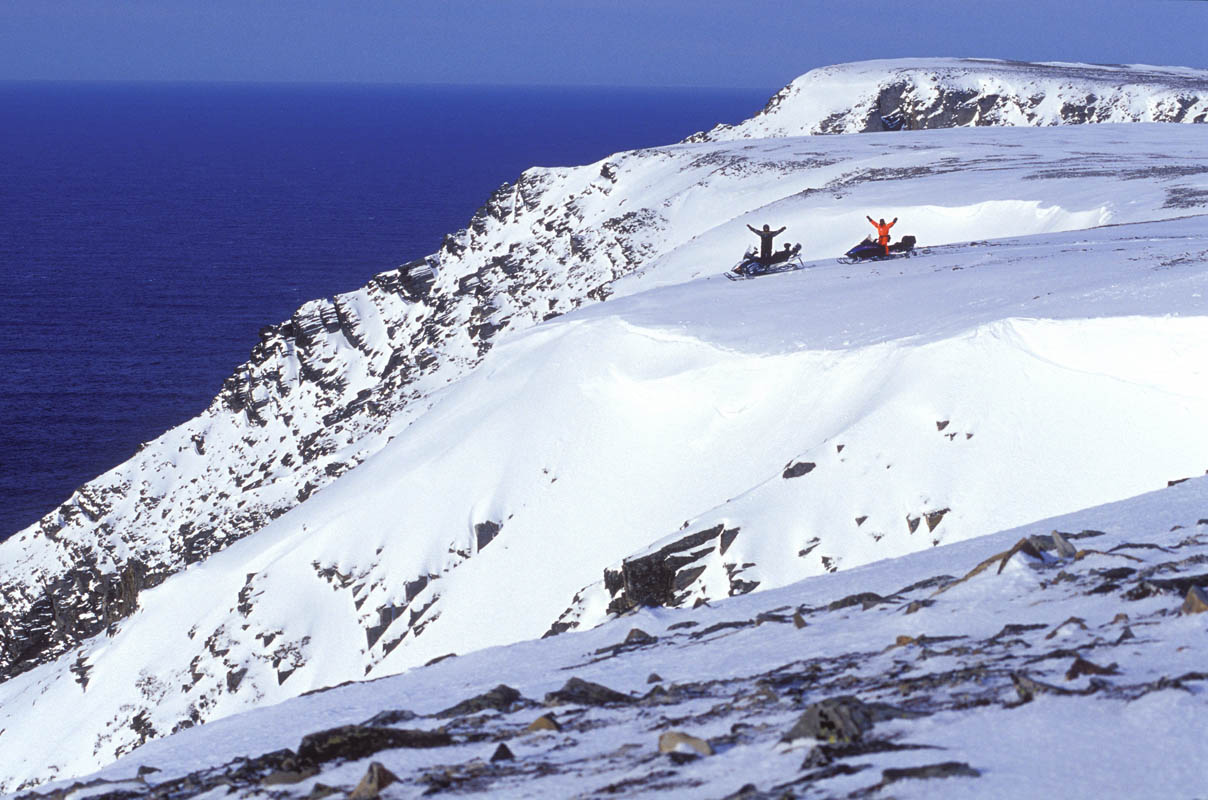The lighthouse was lit for the first time in 1905, and a red and white cast iron lighthouse guided vessels through the shallow, treacherous waters. The lighthouse keeper and his assistants and their families all lived here, a small, isolated community watching over the ships. In 1922, a foghorn was installed. During the Second World War, the Germans controlled the lighthouse signals, and the lighthouse was only lit when German convoys were passing.
Destruction was only temporary at the end of the war
In the autumn of 1944, the lighthouse was to be destroyed, like all other traces of human activity in Finnmark. All the buildings were burned down and destroyed, but the blasting of the lighthouse itself did not go quite according to plan. Only the top of the tower was destroyed before the Germans withdrew, and in 1945, one of the gas lanterns in the tower was lit once again. The building of a lighthouse tower was a priority during the subsequent reconstruction, and from 1949, the lighthouse returned to ordinary operation. The other Finnmark lighthouses were rebuilt from concrete, but at Slettnes, it was decided to place a new top on the cast iron lighthouse that was still standing.
The architechture is post war style much like the rest of Finnmark
The buildings were designed by architects Blakstad and Munthe-Kaas, who designed a large number of buildings during the reconstruction of Finnmark after the Second World War. They are shaped like four large, identical apartments in two buildings. The building complex also includes four outdoor toilets in a line and four boathouses. The pre-war buildings were very different — the lighthouse keeper had a bigger and more luxurious dwelling than his assistants, while the social democratic post-war period placed greater emphasis on equality. In 1973, the families vacated the lighthouse, and the lighthouse keepers began to work on a rotation basis, with time spent both at home and at the lighthouse. In 2005, Slettnes became one of the last few lighthouses to be fully automated.
In the summer there is a café and hourly tour
For summer visitors to Nordkyn, a trip along the 4-km (2.5-mile) gravel road from the fishing village of Gamvik is a must. Coffee and waffles are prepared in the kitchen of one of the lighthouse keeper apartments, while the living room functions as a simple café. During the summer season, tours depart on the hour from the café up into the lighthouse. You then take the 139 steps up to the lighthouse itself, which is 39 metres (128 ft.) tall and therefore Norway’s fifth-tallest lighthouse tower. On the way up, you pass from the pre-war lighthouse into the reconstructed lighthouse. From the confined lighthouse room, you can see the Barents Sea, distant ships far out to sea and the white breakers and the coastal strip westwards towards Kinnarodden, the northern tip of the European mainland.
You can stay overnight at Slettnes Lighthouse
If you prefer relaxation and peace and quiet to evening entertainment, you can stay in a lighthouse keeper’s room at Slettnes Lighthouse. The light switches, the cupboards and the window slats are all in a typical post-war style and the furniture and curtains are neutral and timeless. The standard is basic, the main attraction being the view out towards the Arctic Ocean and the impressive lighthouse. A bathroom in the hallway and a shared kitchen are included in the experience.
Cultural landscape far to the north
If you stay at Slettnes Lighthouse, Slettnes nature reserve and the Fotefar cultural trail towards the north are natural excursions. The area is a plain with peat bogs and small lakes and is home to a rich bird life, including skua, tern, snipe and ducks. What is perhaps more surprising is that the area has also previously had a fairly dense population. Remains of houses and stone walls testify to the fact that people lived in the small bays here. Numerous information boards are placed along the well-marked Fotefar trail towards the north.

Visit Nordkyn
For all the information you need on visiting Slettnes lighthouse and the surrounding peninsula, simply check out the Visit Nordkyn webpage.
